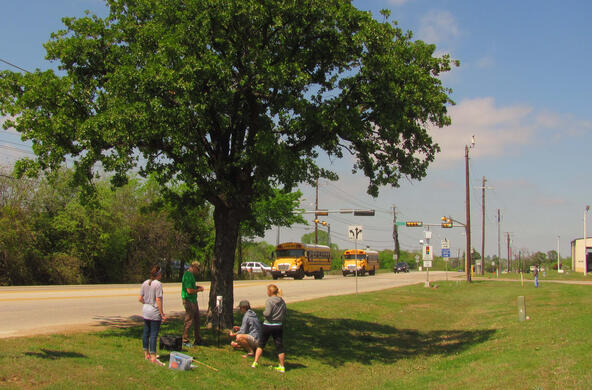While most ecologists conduct field work in natural settings, Cary Institute scientists have pioneered the inclusion of urban and suburban landscapes in ecological research. The Baltimore Ecosystem Study (BES), founded in 1997 by distinguished senior scientist Dr. Steward T.A. Pickett, is one of two NSF-funded long term ecological research sites in the world that is based in a city. The BES “field” presents unique challenges. Buildings, pavement, and underground sewers create unnaturally-paced ecological changes, which impact pathogen circulation, air and water quality, and other environmental variables.
Dr. Shannon LaDeau recently joined the BES team. Building on her previous work, which showed that West Nile virus mortality among North American birds was greatest in human-dominated landscapes, LaDeau is now unraveling the mosquito part of the “bird-mosquito-human” transmission equation. Baltimore hosts few of the sixty-two species of mosquito known in the Mid-Atlantic region, but many of those present can transmit West Nile virus to birds and humans.
As her program unfolds, LaDeau is developing solutions to urban fieldwork hurdles. Rural ponds have seasonal water-level variation, but generally remain wet year-round. In paved neighborhoods, however, urban puddles have a fleeting lifespan—often lasting for less than a week. This is great for mosquito breeding, but terrible for replicating research results. So in addition to puddle surveys, LaDeau uses water traps to attract egg-laying females and identify local mosquito species. By changing the traps weekly, she mimics the behavior of puddles.
Additionally, LaDeau notes, scientists can’t just set up experiments wherever they please in urban areas. City regulations, private property restrictions, and human foot traffic are all elements that she navigates in the course of conducting research in this setting.
For LaDeau and the other BES participants, the challenges of urban ecology are simply part of the territory. Since nearly three quarters of US citizens reside in suburban and urban areas—and metropolitan demographics are growing worldwide—ecologists now realize the necessity of studying cities as habitats. To learn more about BES, visit www.beslter.org.






